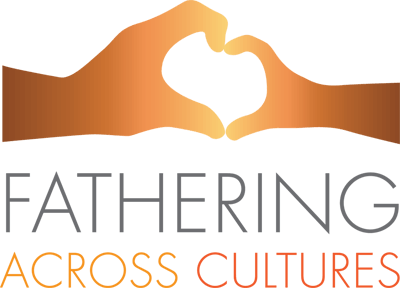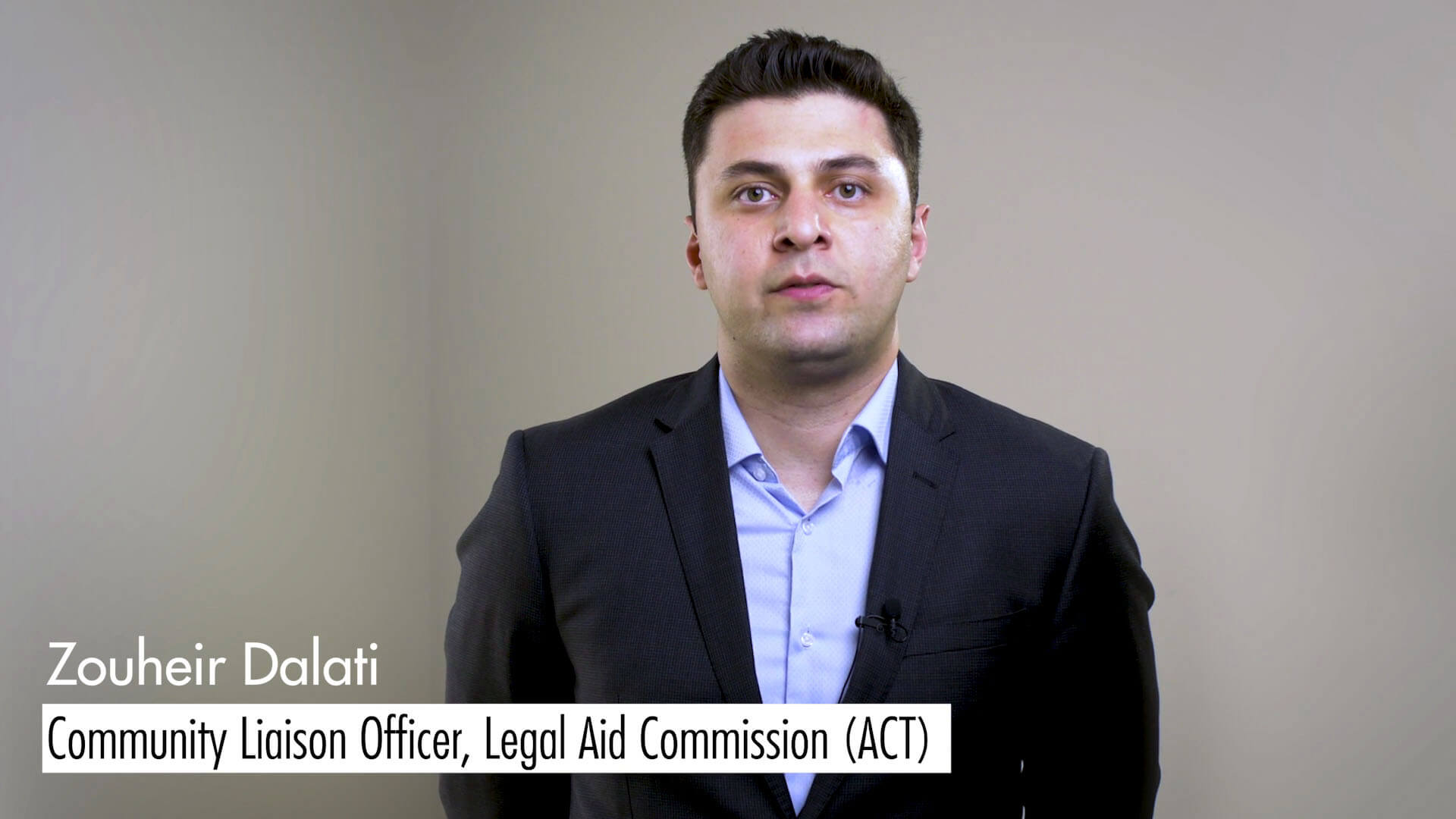If violence is already present
If the father discloses behaviours that could be interpreted as controlling or abusive from the partner’s point of view, refer them to preventative services. Do not attempt to screen him by asking his more questions, unless required by legislation. Asking screening questions may risk the perpetrator suspecting that his partner has disclosed information and could risk escalation of violence and controlling behaviour where already present, especially if the victim also attends the same health/mainstream service.[1]
In Victoria, organisations may be required to use screening and identifying tools when family violence is suspected or identified. You should be aware of your obligations under theFamily Violence Information Sharing Scheme and the MARAM framework. Victoria has different information sharing schemes applied to prescribed organisations that oblige certain services and professionals to share information about perpetrators and alleged perpetrators of family violence. Service providers in Victoria working with alleged/perpetrators have to update clients on their limited confidentiality under the scheme.
No matter the setting in which it occurs, family violence is a human rights issue. Excuses of circumstance, religion and cultures are not legitimate defences of the practice. ‘Response to perpetrators must be done in ways that minimise collusion with the attitudes and beliefs that the perpetrator uses to absolve himself of responsibility for his violent and controlling behaviour, to minimise the importance and impact of this behaviour, and to make himself out to be the victim.[2] Collusion can take the form of agreement with his excuses and focusing on his experience as a victim more than on the family’s experience, or aggressively contradicting his views. Above all else, remain respectful during the interaction to keep him engaged with your service, and not trigger an angry or defensive response.


Resources for fathers
- 1800RESPECT has qualified and experienced counsellors that can provide information, anonymously, 24/7. 1800 737 732 – www.1800respect.org.au/help-and-support/using-violence/
- MensLine: MensLine Australia is the national telephone and online support, information and referral service for men with family and relationship concerns. MensLine Australia offers telephone anger management and behavioural change programs, as well as online counselling – 1300 78 99 78 – mensline.org.au
- Men’s Referral Service: provides anonymous and confidential telephone counselling, information and referrals to help men take action and stop using violent and controlling behaviour – 1300 766 491
- NSW and TAS: Open 24/7. ACT, NT, QLD, SA, VIC and WA: Weekdays 8am – 9pm. Weekends 9am to 5pm. The Men’s Referral Service is also for people concerned about a friend’s or relative’s violent behaviour, and from service providers seeking a secondary consultation.
- No to Violence is the peak body for organisations and individuals working with men to end their violence and abuse towards family members in Victoria and NSW. www.ntv.org.au/get-help/
- Dadvice by Beyond Blue: resources for fathers focused on preventing anxiety, depression and stress. healthyfamilies.beyondblue.org.au/pregnancy-and-new-parents/dadvice-for-new-dads
- Support for Fathers by Relationships Australia Victoria – supportforfathers.com.au
- Fatherhood Program – White Ribbon Australia. www.whiteribbon.org.au/fatherhood/
- Raising Children Network – resources for fathers raisingchildren.net.au/grown-ups/fathers
- MensLine Australia– resources for fatherhood mensline.org.au/being-a-dad/
- Maternal and Child Health or Child and Family Health Services are free services provided across the nation to provide support and information for all new parents. Their focus is on working in partnership with the family to achieve best outcomes for children. As a service for both parents, Fathers are welcome to discuss questions or concerns with their local Maternal and Child Health or Child and Family Health Nurse.
- Fathering Across Cultures App

Resources for service providers
Prevention
- Australian Government, Department of Social Services Family Safety Pack (2019) www.dss.gov.au/family-safety-pack A resource informing men and women coming to Australia about Australia’s laws regarding domestic and family violence, sexual assault and forced marriage, and a woman’s right to be safe.This resource has been translated into 46 languages.
- DV-alert provides education and training on domestic violence www.dvalert.org.au
- The Lookout contains a guide for family violence workers and other professionals to respond to family violence used in Victoria. www.thelookout.org.au
- No to Violence has a Bystander Intervention Training and other working with men training programs. www.ntv.org.au/training-resources/training/
- No to Violence factsheet: Tips for engaging men on their use of family violence www.ntv.org.au/mdocs-posts/tips-for-engaging-men-on-their-use-of-family-violence/
- No to Violence offers Bystander Intervention Training and Culturally Responsive Practice: When working with CALD clients using family violence training. www.ntv.org.au/training-resources/training/
- Our Watch, Men in focus: unpacking masculinities and engaging men in the prevention of violence against women, (Our Watch, 2019) https://www.ourwatch.org.au/getmedia/47bd1d32-4099-4bbf-85d1-c09e5d982877/Men-in-focus-web.pdf.aspx
- Jasmin Chen, Intersectionality Matters: A guide to engaging immigrant and refugee communities to prevent violence against women (Multicultural Centre for Women’s Health, 2017) www.mcwh.com.au/downloads/Intersectionality-Matters-Guide-2017.pdf
- Linden Deathe and Stephanie Rich, Speaking publicly about preventing men’s violence against women: Curly questions and language considerations, (Women’s Health West, 2015) whwest.org.au/wp-content/uploads/2016/01/Speaking-on-PVAW-Resource_KH_WEB.pdf
- Dr Adele Murdolo and Dr Regina Quiazon, Key Issues in working with men from immigrant and refugee communities in preventing violence against women (White Ribbon Research Series, 2016) www.whiteribbon.org.au/wp-content/uploads/2016/10/100-WR_Research_Paper_V7.pdf
Cultural Competency
- DSS Community Profiles have been developed to assist service providers to better understand the backgrounds and needs of Humanitarian Program arrivals. www.dss.gov.au/our-responsibilities/settlement-services/community-profiles
- Brotherhood of St Laurence Cross-cultural Responsiveness training has modules with a focus on families and children and information on diverse child-rearing practices. www.bsl.org.au/services/refugees-immigration-multiculturalism/cross-cultural-responsiveness-training/
- SBS Cultural Competence Program SBS Cultural Competence Program is an online training course aimed at building capability around cultural diversity in the workplace. It features engaging multimedia learning modules and a wealth of resources cultural-competence.com.au/home. cultural-competence.com.au/home
- SBS Cultural Atlas is an educational resource providing comprehensive information on the cultural background of Australia’s migrant populations. culturalatlas.sbs.com.au
- STARTTS has a Cultural Competence in Working with People from Refugee Backgrounds Workshop Booklet (2015) available for free download. www.startts.org.au/resources/resources-for-free/
Fatherhood and parenting
- Gilles Forget, Ignacio Correa-Velez, & Mike Dee (2018) Being a father in my new society: A qualitative study of the fathering experiences of men from refugee backgrounds resettled in Australia. Journal of Refugee Studies. https://eprints.qut.edu.au/122910/
- Relationships Australia Victoria’s Support for Fathers provides dads with options and information about fatherhood, the relationship with their partner and connecting with their kids. It also provides a toolkit for support services to work with dads and families . https://supportforfathers.com.au

[1] North West Metropolitan Region Primary Care Partnerships, Guidelines for Identifying and Responding to People Who Cause Family Violence Harm (April 2018) 12. http://inwpcp.org.au/resources/identifying-and-responding-to-family-violence/guidelines-for-engaging-people-who-cause-family-violence-harm/.
[2] North West Metropolitan Region Primary Care Partnerships, Guidelines for Identifying and Responding to People Who Cause Family Violence Harm (April 2018) 18. http://inwpcp.org.au/resources/identifying-and-responding-to-family-violence/guidelines-for-engaging-people-who-cause-family-violence-harm/.
[3] North West Metropolitan Region Primary Care Partnerships, Guidelines for Identifying and Responding to People Who Cause Family Violence Harm (April 2018) 18. http://inwpcp.org.au/resources/identifying-and-responding-to-family-violence/guidelines-for-engaging-people-who-cause-family-violence-harm/. These guidelines are directed to health and mainstream services in Victoria.
[4] Domestic Violence Victoria, Submission to Family Safety Victoria: Family Violence Information Sharing and Risk Assessment and Risk Management Framework (10 July 2018) 52.
[5] White Ribbon Australia, Financial abuse, https://www.whiteribbon.org.au/understand-domestic-violence/types-of-abuse/financial-abuse/.
[6] White Ribbon, Signs of an abusive relationship, https://www.whiteribbon.org.au/understand-domestic-violence/what-is-domestic-violence/signs-abusive-relationship/.
[7] Victorian Government, Department of Human Services, Family Violence Risk Assessment and Risk Management Framework and Practice Guides 1-3 (2nd Ed, 2012) 21-22.
Download this page as a fact sheet
PDF format
Microsoft Word format

